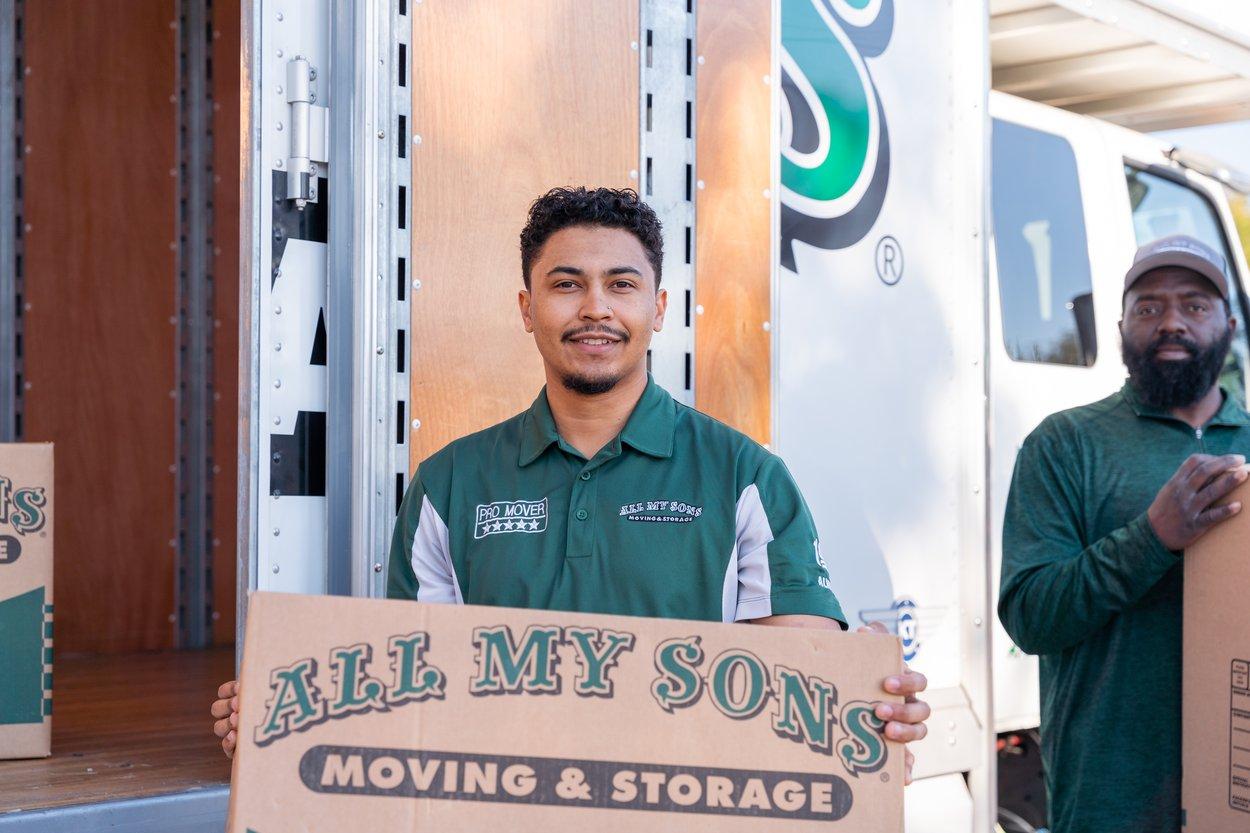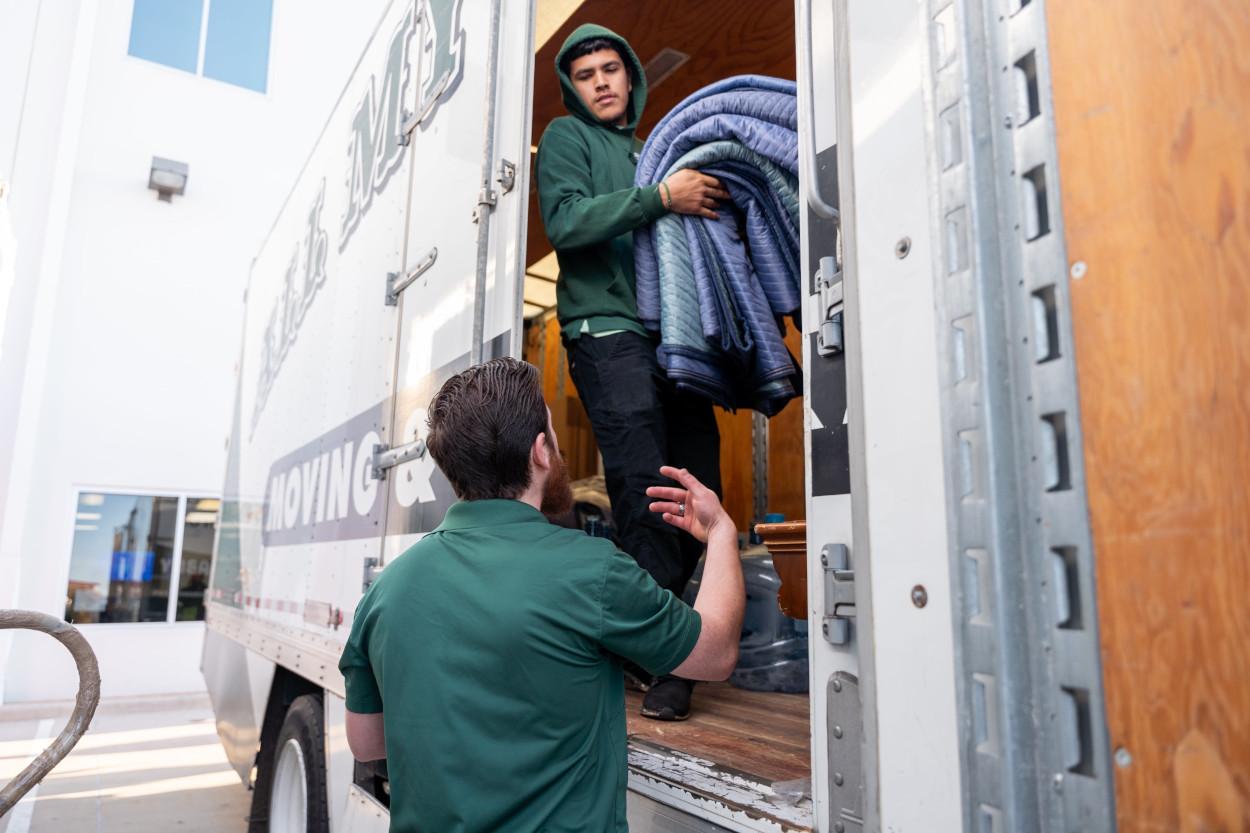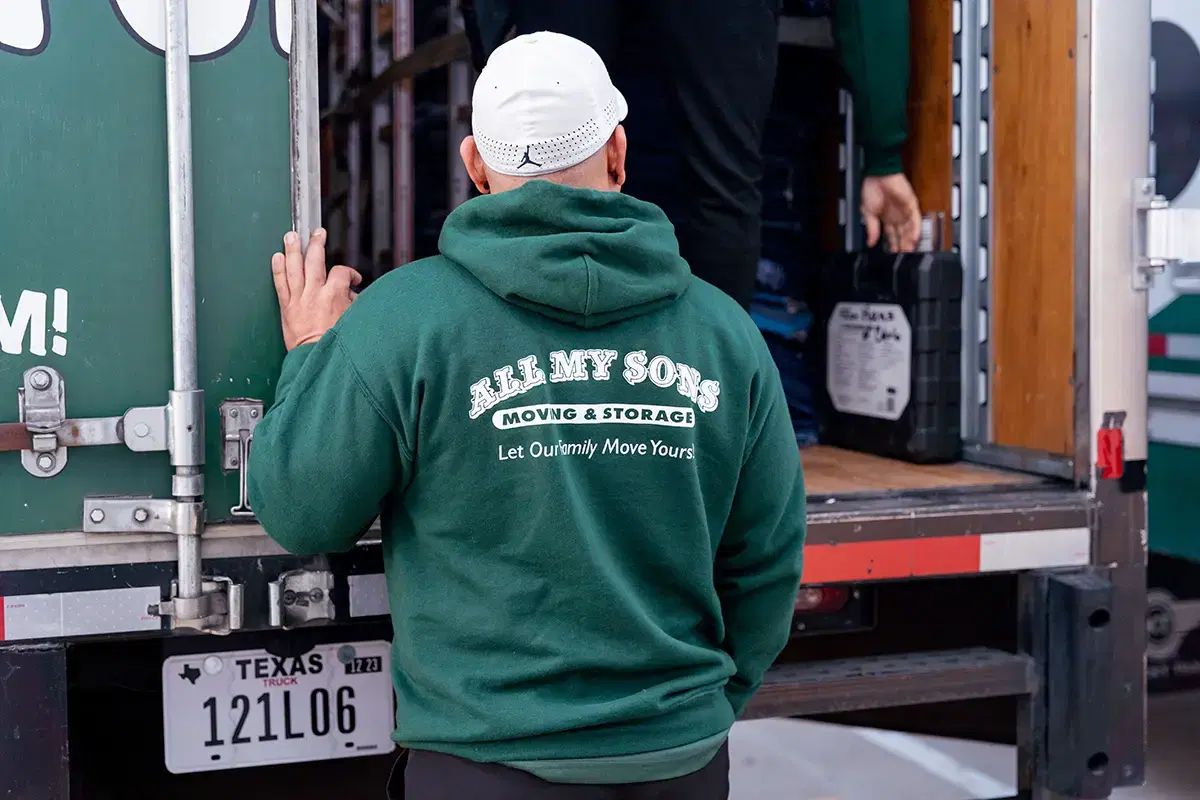Off to College: Should You Rent Storage?
All My Sons Moving & Storage, the company that specializes in residential and apartment moving, also offers storage solutions across America.
High school graduation is finally behind you, and you’re striking out on your own for the first time. If you’re a college student who is relocating, one of the questions you might consider is whether or not it’s worth it to move items into storage while you’re gone. Unfortunately, there is no clear-cut, one-size-fits-all answer and you will need to decide for yourself if this option is right for you.
After over 30 years in business, All My Sons knows all the ins and outs of making a big relocation, and we’d love to share some of our hard-earned storage wisdom with the next generation of movers. When you’re asking yourself if you should put stuff in storage before you leave for college, here are some important questions to consider and steps that you should take before you sign the storage contract.
Questions to Consider When Deciding to Rent Storage
All My Sons already has a list of five major questions you should ask yourself before you rent storage space, but those are questions that apply to any person seeking storage. These questions apply specifically to you, the bright-eyed young adult on their way to college! Contemplating the answers to these questions will allow you to decide whether or not renting storage is worth it for you.
Think about each answer carefully to help you weigh the pros and cons of signing on a storage contract.
1. Are your parents clearing out your room?
For some young adults going off to college, their home bedroom will always be waiting for them. Unfortunately this does not apply to everyone. Whether your parents are making their empty-nester move into their retirement home or looking to get started renting on AirBnB, for some young adults the old childhood bedroom is no longer a viable storage option. If your Mom has already called the contractors to start tearing up your old bedroom’s walls the day after your classes start for her long-desired home yoga studio, then storage might be the best solution for you.
2. How much space will you have in your dorm or apartment?
Will you be living the dorm life for a season? You will have limited space. A storage unit could help you hang onto some important belongings that don’t fit in the standard-issue dorm dresser.
Off-campus apartment? Try to check out your closet space before you start the official move-in process. You might be able to store everything you want to take with you in a big walk-in closet. Tight closets that you have to share with roommates could be a point toward getting the extra storage space.
3. How much money do you have in your monthly budget?
The average former childhood bedroom can probably squeeze into a 10 by 10 storage unit. According to SpareFoot, the standard 10 by 10 self-storage unit had an average monthly cost of about $91.20 in 2024. Please note that if you require a climate controlled unit, additional space, or drive-up access, the monthly price rises. Your personal monthly price will also depend on the geographic area you’re storing in. Your hometown prices could be higher or lower than your college town prices. Best to check both.
When you’re sitting down to craft your college budget, consider how much storage is going to cost you every month, both the actual monetary value and sentimental value of the things you intend to store, and roughly how long you think the items may be in storage.
It could be that $91.20 a month fits okay into your monthly budget, but if you store all the way through college then that monthly cost compounds into $4,377.60 over time, assuming there are no rate increases in those four years. If you’re thinking of hanging onto bedroom furniture to use after college, it’s probably more cost-effective to sell or donate items now and purchase new items when your post-college home is in sight. On the other hand, maybe you would pay absolutely any price to hang onto the rocking chair that was hand-carved by your favorite uncle. You decide what price is worth it.
4. How far are you going for college?
It might make sense to rent storage space close to home if you’re going to the local community college. You can pop over to check on your unit anytime you want. If you are getting as far away from your childhood home as possible and enrolling in a dream college out of state, it might not make sense to rent a storage space down the street from your parents’ place, especially if (See Question 5) you don’t know when you’ll be back. The storage unit is likely to get forgotten.
If you do rent storage close to home and move several states away, you should at least leave keys and access instructions with someone staying behind.
5. What are your plans after college?
Maybe you’ve got the next five years after college all mapped out, and they don’t include coming back home. Or perhaps you’re like many young adults and you’re just taking life one stride at a time. Even the best laid plans can get waylaid by life’s unexpected curveballs after all.
If coming back home is part of the plan, it might make sense to rent storage in your hometown. Alternatively, if you plan to get a job in the big city after you graduate, you might want anything you store to be in the same city as you.
6. What are the items you intend to store?
Would you like to store your bedroom furniture or just a few boxes of keepsakes? Furniture pieces might be able to go into full-service storage for several years while you finish your degree, but perhaps you want to have access to items in your keepsake boxes on a monthly basis. Maybe you want to put your dorm holiday decorations into storage somewhere near campus so that you can enjoy seasonal cheer every year you live the dorm life.
7. How often will you access your unit?
Will you need access to your unit every month, on demand, or never? How often you intend to access your unit will help you determine what type of unit to rent and what amenities to include, like 24 hour access if you want to get into your unit at all hours.
If you intend to put items into storage and will not need access to them again for some time, you might consider full-service storage. College students that want easy access to their units should consider drive-up self-storage.
8. What would happen if you were not able to pay for the unit?
In the event you were no longer able to keep up with the storage rent bill, what would be your plan? When you enter into lien status, some storage facilities will allow you to pay a settlement, or a portion of what you owe in exchange for the opportunity to move out immediately. This might prove difficult if you have moved several states away. Would any family or friends be able to help you foot the bill, or make a quick move-out?
Types of Storage Units to Choose
Considering all the above questions, it’s time to choose a storage unit.
Think carefully about the items you intend to store and how often you would like to access them. Not every storage unit is going to meet your needs, and it’s much better to think ahead now than waste time, money, and labor getting into a storage unit that isn’t a perfect fit.
Take a look at the following storage options.
Storage Lockers: These units are typically under five feet tall and under five feet wide. They are good for storing just a few boxes of sentimental items, but you would not be able to fit any furniture in them.
Drive-Up Storage Units: If you want to get into your unit often, a drive-up unit makes accessibility a breeze. These storage garages are located on the outside of the self-storage facility with enough room to drive a vehicle right up to them.
Indoor Storage Units: Units inside the storage facility will generally be less expensive than units on the outside. Accessing these units could get a little tricky with additional doors or staircases between you and the unit.
Climate-Controlled Storage Units: Protecting the contents of your unit from extreme temperatures and humidity, climate-controlled units tend to run more expensive than your standard indoor unit.
Full-Service Storage: Some companies offer full-service storage options where the company will handle pickup, shipping, and packing of your storage unit. You may not be able to access this unit on demand, but you will enjoy added security and you can request delivery of your items when you want them back.
Knowing what your storage needs are and what types of storage solutions are available, you will be able to choose the ideal unit for you.
How to Move Your Stuff into Storage Successfully
You’ve decided to put your stuff into storage when you go off to college, but how do you make your move into storage so that your stuff will be safe long-term?
Take these five steps as you put your items into storage, and you can ensure your items stay as secure as possible during their stay.
Step 1: Declutter and Downsize
Save time, money, and space by decluttering and downsizing prior to your move into your storage unit. You don’t want to open up your storage unit after your college graduation to discover you spent thousands of dollars to hang onto something you could have determined you would never need again pre-freshman orientation. As you go through your childhood bedroom, think critically about every item you have and sort them into the following categories.
Donate: Unwanted items in good condition that can serve their purpose well should be donated to your favorite charity. You can donate old clothes, shoes, and toys to national charities like Goodwill or Salvation Army. Habitat for Humanity’s ReStores will take donations of gently used furniture.
Give Away: Some items you will decide you do not need to keep personally, but you may have a specific person in mind who might like the item. Drop that person a line and ask if they want the item. If the answer’s no, sort these items right back into the donate pile.
Sell: Spare cash will be hard to come by when classes are in full swing. You can try selling unwanted items in good condition that could fetch a fair price. Try selling at a garage sale or sell online on Facebook Marketplace, Craigslist, eBay, Poshmark, thredUP, or Mercari.
Discard: Items that are not in usable condition or would be utterly meaningless to another person should be discarded. Got sizable items to junk? You can make your decluttering process short and simple by calling Junk.com to offload old furniture, electronics, and other bulk trash items.
Leave Behind: See question one. If your parents are not immediately cleaning out your room or downsizing and moving, you might be able to leave some items with them. You could keep some childhood memorabilia items in your old bedroom, the attic, or the garage. Keep the lines of communication with your parents open in case something at home changes.
Keep With You: Some items are too precious to go anywhere but right where you are. After all, you’ve slept in those pink teddy bear pajamas since you reached your adult height and you’re not stopping now just cause you have utility bills to pay. Good on you for keeping your favorite comfort objects with you where they belong. Grab your beloved stuffed dinosaur, your late grandma’s unicorn snow globe, and the kitchen can opener. Put those essentials in the boxes coming with you to the dorm or off-campus apartment.
Put into Storage: If you’ve come to the end of the sorting and found there are still items left, these are probably your contenders for storage. These items might not need to come with you, but you can’t dream of parting with them yet.
With your collection of storage items whittled down to the items you are sure you want to keep long-term, you can choose a smaller storage unit and save money in the long run.
Step 2: Purge Items You Should Not Store
Every storage facility keeps an extensive list of items you should not store. These are items that can attract pests, like perishable food, or items that are extremely dangerous to store like explosives. Before you start packing your items for storage, review your storage facility’s contract and make arrangements to dispose of or find another solution for any items you are prohibited from putting into storage. If you choose to store items that you are prohibited from storing, you run the risk of damage to your own items as well as damage to the entire facility. Do yourself and the whole facility a huge favor and just follow the rules.
You should also watch out for those items that might not be outrightly prohibited but that may not do very well in storage long-term, such as items that freeze or melt. Candles, crayons, soap, and makeup are best kept with you, and not out of sight in a storage unit.
Step 3: Take Inventory
Right before you start preparing your items for storage, start creating a moving inventory of the items that are going into storage. A storage unit inventory will help you keep track of your items as they go into storage, and can even help you with an insurance claim in the event of a disaster.
Keep a list of what items are going into which boxes. Should you need to go searching through your storage unit at any point, it will help to know exactly what box you stored something in. If you have any items of particular value, take pictures of them to notate their condition prior to going into storage.
Step 4: Prepare Items for Storage
Dirt, grime, dust, and odors will all fester in a dark storage unit. Prepare all your items for storage before you pack them away. Wash clothes, dust collectibles, and clear any kitchen items of food particles before you put items into boxes. Make sure everything you are putting into storage is clean and dry. This will cut down on the chance of pests getting into your unit or mold finding a foothold in your items.
Step 5: Organize Your Unit
Once all the items are packed and the furniture is prepared, organize your unit well so that you can successfully navigate your unit whenever you access it. Label all your boxes and bins clearly, map the unit by ease of access, and leave aisle space for navigation.
For example, if you intend to come back to your unit for seasonal clothes then put your boxes and bins of seasonal clothes at the front of the unit. Items you do not intend to touch until you are moving out of the unit, such as treasured furniture pieces and boxes of memorabilia, can safely go to the very back of the unit.
If you access and search your unit often, consider adding shelving to your unit so that you can quickly take a look at all your boxes and bins and pull out what you need immediately.
Begin Your College Adventure with Items Safe in Storage
Now with your storage unit packed, you can skip into your first week of classes knowing your childhood artifacts and family memorabilia items are safe until you need them again. Now’s the time to embark on the next big chapter of your life, independent college living. Happy storing!
Ready to relocate for your college adventure? Get a quote from All My Sons Moving & Storage and make this next move a seamless transition into independent living. We’ll take you and your items local to the state school near home or long-distance to that dream university across the country. We’ve got experts in apartment moving and storage solutions for those college students who need a little extra space. Call 1-866-726-1579 to reach one of our 90+ locations across the nation or click the link below to get your quote.
Quick Moving Tips

How to Pack Electronics for a Move
Follow this 5-step guide to ensure all your electronics make it to your destination safely.

How Far in Advance Should You Book Your Professional Movers
Securing your desired move date will be more difficult during certain parts of the year with limited advance notice, so we recommend you book several weeks out.

How to Pack Your Bed Frame for a Move
Getting the bed frame safely moved can save your back and knees when it comes time to get up in the morning post-move.


